Our history
Foundation and Early Years
The University of Ferrara is one of the oldest universities in the world. The foundation of the ‘Studio di Ferrara’ was granted by Pope Boniface IX with the papal bull ‘In Supremae Dignitatis’ on 4th March 1391, at the request of Marquis Alberto V d’Este. Law, arts and theology courses were offered in the Studio.
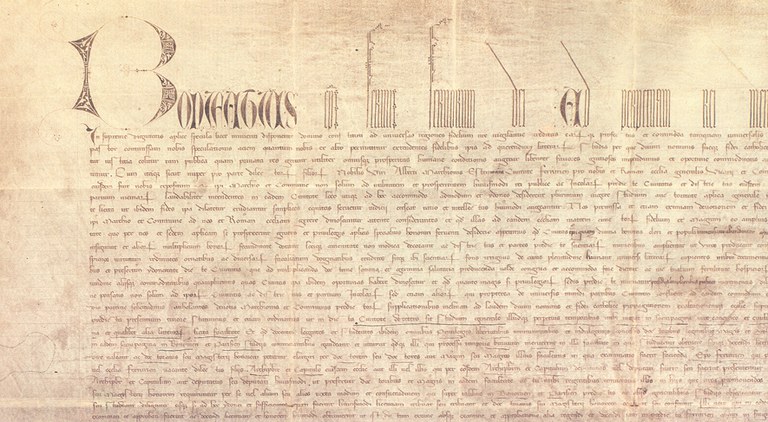
The papal bull “In Supreme Dignitatis"
The Development of the Studio
In the early decades of the 15th century, the presence of the University encouraged the influx of wits and thinkers, foreigners, money and consequently trade into the city, increasing its fame and prestige.
These were the times of Nicolò da Longo, known as Leonicenus, a doctor, philosopher and mathematician, Giovanni Manardo, doctor to Pico della Mirandola and Ladislaus of Hungary. Ludovico Carbone, Ludovico Binaccioli, Gabriele Faloppio and Giovanni Battista Canani, author of anatomical studies of great value, and Andrea Vesalio, later physician to Charles V, followed in their footsteps.
After having completed his studies in Padua and Bologna, Nicolaus Copernicus came to Ferrara in 1503 and was awarded a degree in Canon Law on 31st May. Besides Copernicus, other outstanding students and lecturers at the Este University were Theophrastus Bombast von Hoenheim, known as Paracelsus, a student of Leonicenus and Manardo, who left an indelible mark on the history of medicine. The lecturers included, in addition to those already mentioned, Celio Calcagnini, mathematician, a man of letters, poet and philosopher, Andrea Alciato, a jurist from Milan who was called to Ferrara, and Antonio Musa Brasavola, author of the "Examen Omnium Simplicium Medicamentorum", a basic work of botanical research of the time describing over two thousand plants with their relative medicinal properties.
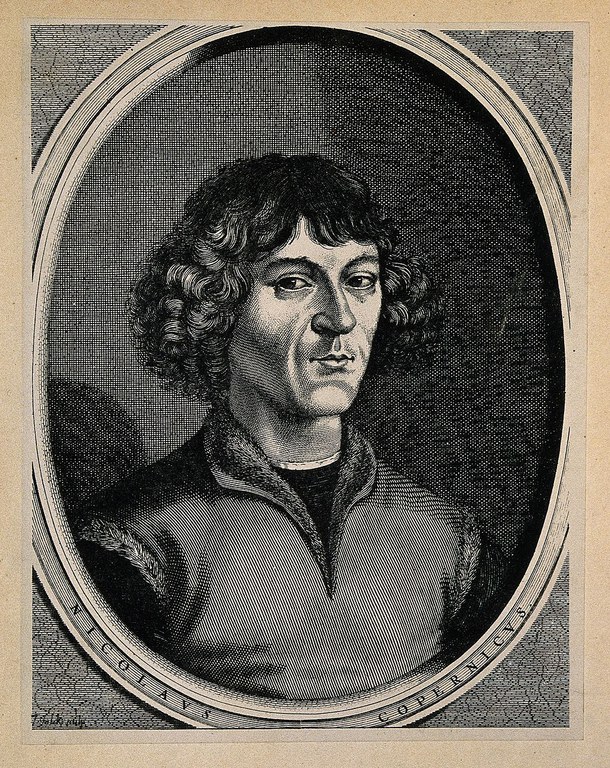
Nicolò Copernico
The Papal Period
Following the Devolution in 1598, the University went from being a flourishing University of the Este State to being one of the Universities of the Papal State, located in a cross-border city.
The Napoleonic Period
The great historical events of the late 18th century following the French Revolution brought a wave of novelty to Ferrara as well, which gave new impetus to the University. In 1797, the local governments were replaced by a central government of the Cispadane Republic, which would merge into the Cisalpine Republic. Among the first measures introduced by this new central government was the establishment of the chair of 'Cispadane Constitutional Law and Universal Public Law', the first teaching of Constitutional Law in Europe. The chair was entrusted to a priest, Don Giuseppe Compagnoni of Lugo, secretary to the government, the same person who proposed the white, red and green tricolour as a flag.
The Resumption of Activities at the University of Ferrara
Following the suspension of degrees in 1803, as from 1816, the University resumed its normal activities. There were eighteen chairs at that time, five for the Faculty of Law, five for the Faculty of Philosophy and Science and eight for the Faculty of Medicine and Surgery. The Faculty of Theology also continued to exist, but was finally abolished in 1859.
The 20th and 21st Centuries
After the Unification of Italy the University became a free university and in the first decade of the 20th century it had over five hundred students.
At that time, the University included the Faculties of Law, Science, the two-year Engineering degree course and the School of Pharmacy (later the Faculty). This was followed by the completion of the Faculty of Medicine, the Faculty of Science and the Faculty of Pharmacy, and the establishment of the Faculty of Education (1968).
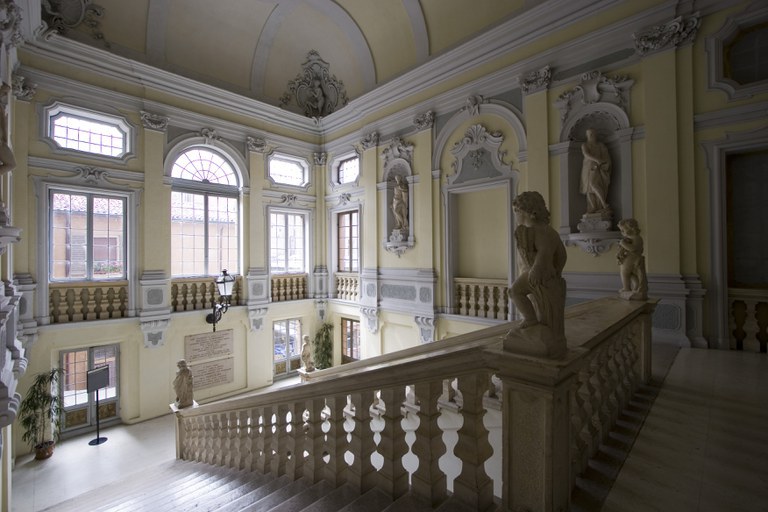
The staircase in Palazzo Renata di Francia, where the Rectorate has its historical seat
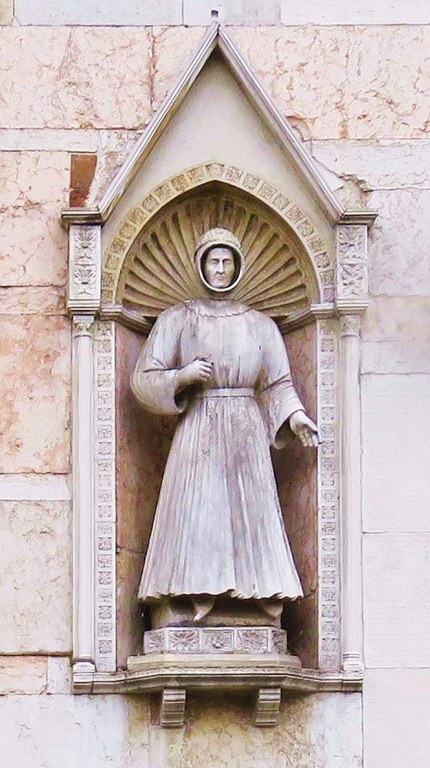
The statue of Alberto V D'Este on the Ferrara Cathedral front
In the last decade of the 20th century, three new Faculties were established, Architecture, Engineering and Humanities (as a transformation of the Faculty of Education), which were later followed by the Faculty of Economics in 1996.
With 68 Bachelor's and Master's degree courses and more than 25,000 students, the University of Ferrara now has thirteen Departments and the Faculty of Medicine, Pharmacy and Prevention, located in prestigious buildings and modern premises immersed in the urban environment, forming a true university campus characterised by its distinctive identity.
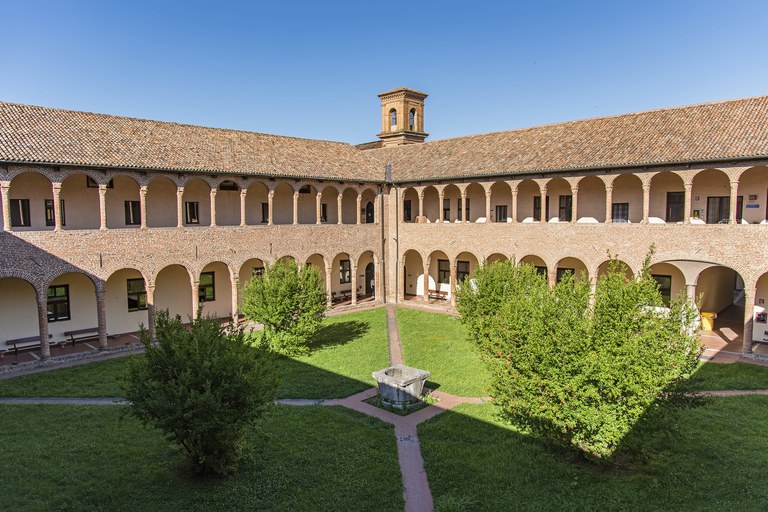
Santa Maria delle Grazie cloister, at the Biomedical and Chemistry Campus
Sources:
L’Università di Ferrara, sei secoli di storia. (The University of Ferrara, Six Centuries of History). By Alessandro Fabbri
L’Università di Ferrara (The University of Ferrara) by Raffaello Scatasta
